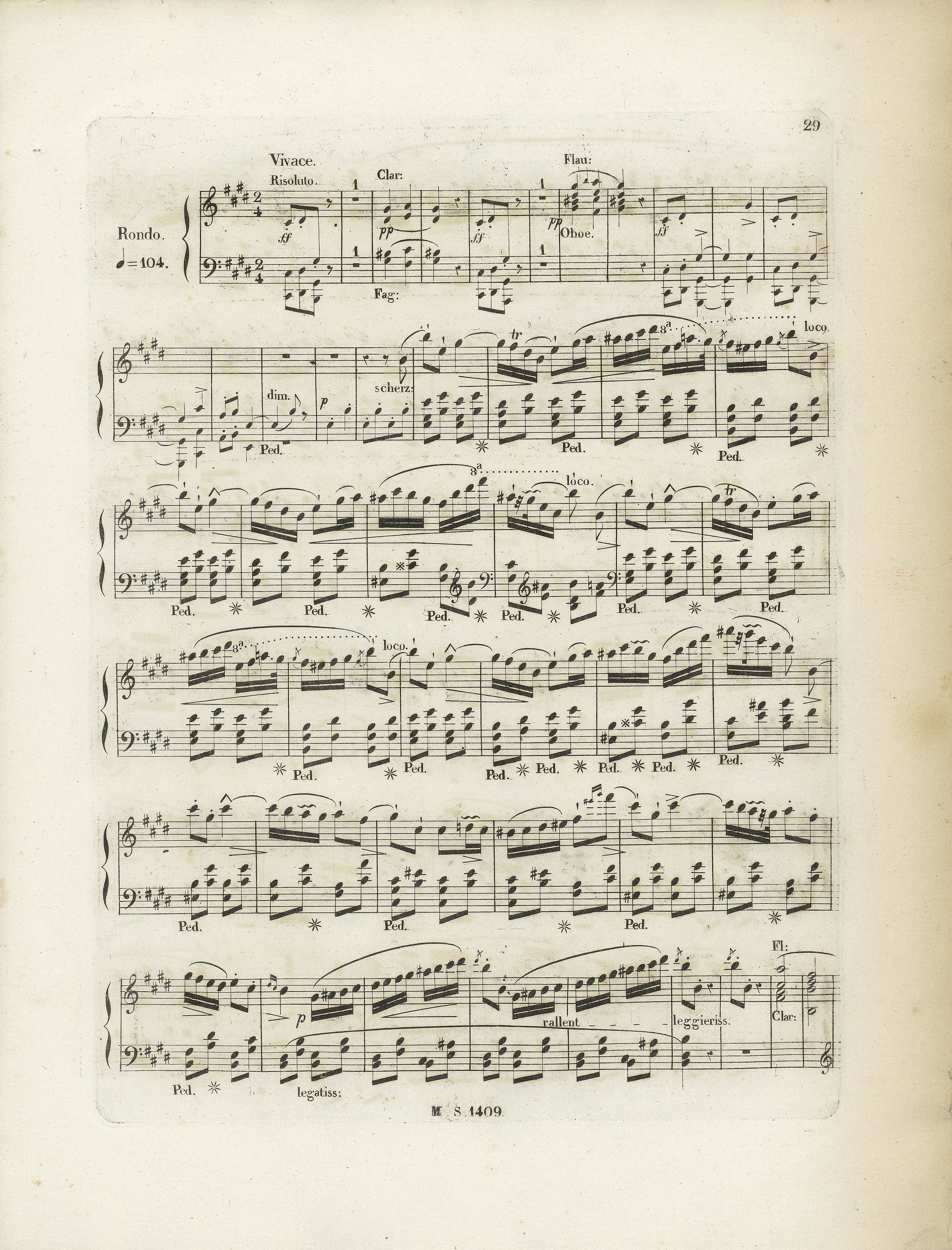



The authenticity of the grace note in the form of a small crotchet raises serious doubts – a small quaver occurs here in the Flute I part of FEorch (→GEorch). The discussed notation was found erroneous already in GE and EE, and both introduced forms of grace notes may be considered to be potentially compliant with the notation of [A]. In the main text, we adopt slashed quavers, most frequently used by Chopin.
See I mov., bar 250.
Compare the passage in the sources »
category imprint: Differences between sources
issues: EE revisions, Errors in FE, GE revisions
notation: Ornaments

